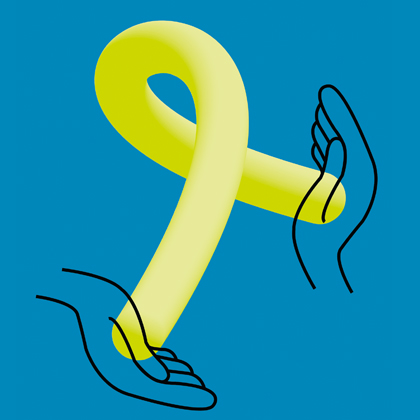
On a crisp morning in early September, more than 50 of Johns Hopkins Medicine’s most visionary thinkers and doers gathered at Folly Farm — the beautiful Baltimore County home of Stephanie Cooper Greenberg, who is chair of CIM’s International Advisory Board — for CIM’s annual retreat. The group’s mission: to advance the initiative to create CIM’s new Institute for Humanizing Medicine.
The rationale for creating the Institute for Humanizing Medicine at Johns Hopkins is four-fold, notes CIM Director David Hellmann:
In the months since the concept for the institute was introduced at last year’s retreat, it has been greeted with great enthusiasm by trustees, faculty members and donors. “In fact,” says Hellmann, “nothing CIM has done has attracted so many donors so quickly.” Over the last six months, he says, “CIM has received nearly $3 million in contributions and pledges.”
Indeed, leaders from across Johns Hopkins Medicine who attended the retreat were unanimous in their passionate support for the mission of the Institute for Humanizing Medicine.
Noting that getting to know patients as people “goes to the very core of what it means for us to be great caregivers,” Theodore DeWeese, interim dean of the School of Medicine, says the new Institute for Humanizing Medicine will pursue that mission “the Hopkins way” — through research, applying the fruits of that research to improve patient care, and then teaching best practices to learners at Johns Hopkins and beyond. “The good news is that we have a great head start, since all of you gathered here are already practicing a humanistic form of medicine,” DeWeese said, gesturing to the clinicians seated around him.
“Getting to know patients as people goes to the very core of what it means for us to be great caregivers.” — Theodore DeWeese
In his role as president and CEO of the Kennedy Krieger Institute, physician Bradley Schlaggar noted that a humanistic approach to care is more needed than ever in the treatment of young patients with disorders of the brain, the population his institute serves. Unfortunately, he says, American health care policy has led to significant “mental health disparities,” whereby many families can’t afford to get the kind of care their children need.
“If we are going to prioritize patient-centered care [for mental health],” he said, “we must build our policies around it.”
A key element of the Institute for Humanizing Medicine is its far-ranging reach across Johns Hopkins Medicine. It will bring together clinicians and scientists from medicine, public health, business and — importantly — from nursing. That’s critical, said Deb Baker, senior vice president for nursing for the Johns Hopkins Health System, because, she said, “nurses are the ‘patient whisperers.’” She noted, “There’s an emotional intimacy in the relationship that nurses have with patients. Nurses are the connectors.”
The new institute will transform the delivery of medical care at Johns Hopkins and beyond so that every patient is known as a person, with a “key focus on respect, trust and empathy.” — Allen Kachalia
The Institute for Humanizing Medicine will also draw upon the proven effectiveness of the Johns Hopkins Armstrong Institute for Patient Safety and Quality, which has galvanized Johns Hopkins to focus on eliminating harm to patients and has changed the way the world views patient safety. In a similar fashion, the new institute will transform the delivery of medical care at Johns Hopkins and beyond so that every patient is known as a person, with a “key focus on respect, trust and empathy,” said Armstrong Institute Director Allen Kachalia. While establishing an institute “won’t make health care’s problems go away,” he said, “it will allow us to set institutional priorities in a clear way and advance the science of humanizing medicine.”
Professors of Medicine Mary Catherine Beach and Cynthia Rand will lead the new Institute for Humanizing Medicine in its tripartite mission — of educating trainees and students, identifying the most impactful research questions, and defining the best patient care interventions that are supportive of clinicians. Both Beach and Rand, internationally renowned for research relevant to humanizing medicine, have been appointed the first CIM Institute for Humanizing Medicine Scholars.
“As the nature of medicine has become increasingly transactional, we have lost a core part of the therapeutic relationship. Humanism is that core part of being a health care provider.” — Cynthia Rand
The duo are optimistic about what the new institute can accomplish and are committed to its mission.
Beach, a bioethicist, has devoted much of her 26-year career in medicine to investigating how respect and communication play out between patients and clinicians, with the goal of improving care for each patient. She noted that too many research models examining clinician communication focus on “what we do wrong, rather than on what clinicians do well.” She said, “We have remarkable clinicians here at Johns Hopkins, and we must take a ‘bottom-up’ approach to learn from them.”
Rand, who is senior associate dean for faculty, said, “As the nature of medicine has become increasingly transactional, we have lost a core part of the therapeutic relationship.” She added, “Humanism is that core part of being a health care provider.”
Rand continued, “With the new institute, we will create a connective tissue across Johns Hopkins that will allow us to rebuild the health care system and make Johns Hopkins a model for the world.”